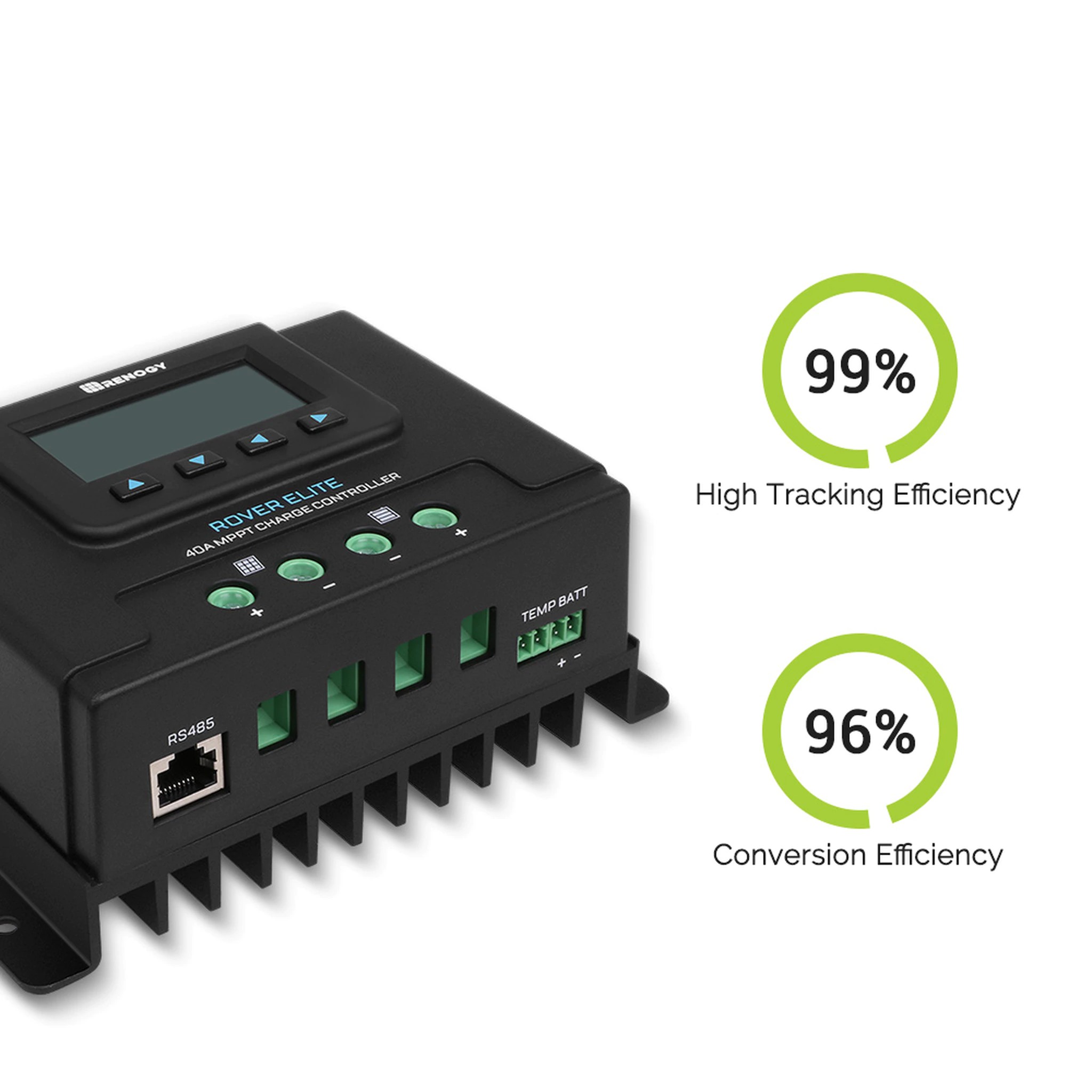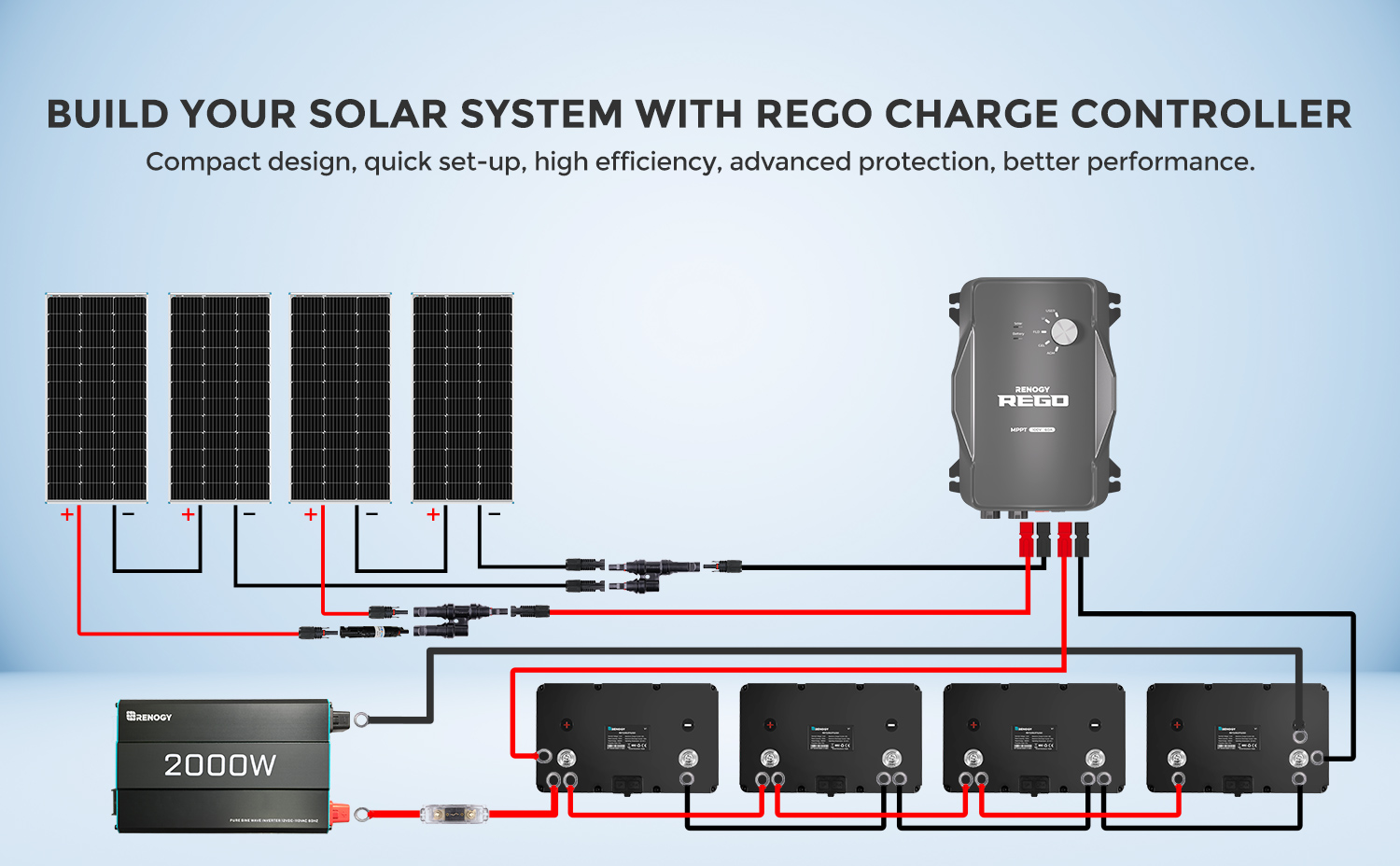What to know about MPPT solar charge controllers
Are they the best solar charge controller for your system?
Charge controllers are a critical component of every solar installation, although they often go overlooked. Charge controllers ensure your system runs efficiently and safely for years to come and ensure your batteries are supplied with a steady and optimum level of power. Charge controller technology also continues to advance and become increasingly powerful and efficient. Maximum Power Point Tracking (MPPT) Charge Controllers are some of the most popular controllers on the market. Are they the best option for you and your off grid solar system?

What is mppt charge controller?
What is a MPPT (Maximum Power Point Tracking) Charge Controller? Maximum Power Point Tracking charge controllers are highly efficient at using the full power of your solar panels to charge your batteries. MPPT charge controllers convert the higher voltage DC output from solar panels down to the lower voltage needed to charge batteries. Essentially, they perform the important function of limiting their output from your solar panels to your batteries to ensure your battery bank doesn’t get overcharged and subsequently damaged. MPPT controllers will monitor and adjust their input to regulate your solar system’s current.
It can also be helpful to think of an MPPT controller as a “smart DC-DC converter.” MPPT controllers increase the current in the same ratio as the voltage is dropped, which is what a DC DC converter does. The controller will also monitor the maximum power point of the panel, which varies throughout the day because of sun angle and intensity and shading. The overall output will increase as a result and you can expect efficiency ratings of 90% or higher.
What’s the difference between MPPT and PWM charge controllers?
Pulse Width Modulation (PWM) controllers are the other main controller technology available in the marketplace. PWM controllers are simpler in design and function and essentially serve as a switch between the solar panels and the battery. PWM controllers bring the voltage down from the solar panels to just above the battery voltage. While a PWM controller draws the current from the solar panels at just above the voltage of the battery, an MPPT controller draws the current from the panel at the maximum power voltage, making them much more efficient. PWM controllers are suitable in smaller systems or where efficiency isn’t very important.

There are a variety of benefits of using MPPT charge controllers. They are highly efficient, perform better if you’re in cold, cloudy environments, are suitable for larger systems where the additional energy production is valuable, and perform best when the battery is in a low state of charge. They are also ideal for situations where the solar array voltage is higher than the battery voltage.
What are the cons of MPPT controllers?
The main drawback of using MPPT controllers is their cost.They are more expensive than the other main charge controller in the market, PWM charge controllers. MPPT controllers cost between about $100 to $700.
What is important to consider with MPPT charge controllers?
Because MPPT controllers limit their output, you can build an array as large as you want and a controller will limit that output. However, this means your system isn’t as efficient as it could be since you have panels that may not end up being properly utilized.
All MPPT controllers have an amp reading, for example a 40 amp MPPT Controller. Even if your panels have the potential to produce 80A of current, a 40 amp MPPT charge controller will only produce 40A of current, no matter what.
Do I always need a charge controller?
Typically, yes. You don’t need a charge controller with small 1 to 5 watt panels. If a panel puts out 2 watts or less for each 50 battery amp hours, you probably don’t need a charge controller. If your panel supplies anything more than that, you will.
In what conditions do charge controllers perform the best?
• Winter and cloudy days when your system needs that extra power the most.
• Cold weather: Panels actually perform best in cold temperatures, but without an MPPT you are missing out on those benefits. Solar panels work better at cold temperatures, but batteries have the highest need to be recharged when it’s cold out.
• Low battery charge: The lower the state of charge in your battery, the more current an MPPT puts into them.
• Long cable runs: If you are charging a battery that is far away from your panels, you’ll typically need to use a very large wire to accommodate for the voltage drop and power loss. However, a sufficient cost-saving solution is to use a high voltage panel setup feeding into a MPPT charge controller, which gives you the ability to use smaller wire.

How should I wire my panels with an MPPT charge controller?
The panels can be wired either in series or parallel or combination of series/parallel using MPPT charge controller.
Where can I mount the charge controller?
An excess voltage will be converted into heat and dissipate into the air. Therefore, your charge controller should be mounted in a well-ventilated area with at least a 9-inch clearance around the charge controller.
How to size your charge controller
Overall, charge controller sizing is not as difficult as you may think. Charge controllers are rated and sized depending on your solar array's current and the solar system’s voltage. You typically want to make sure you have a charge controller that is large enough to handle the amount of power and current produced by your panels.Typically, charge controllers come in 12, 24 and 48 volts. Amperage ratings can be between one and 60 amps and voltage ratings from six to 60 volts.
If your solar system's volts were 12 and your amps were 14, you would need a solar charge controller that had at least 14 amps. However due to factors such as light reflection, sporadic increased current levels can occur, you need to factor in an additional 25% bringing the minimum amps that our solar charger controller must have to 17.5 amps. We’ll round up in this case, so in the end, you would need a 12 volt, 20 amp solar charge controller.
Conclusion: Are MPPT charge controllers worth it?
MPPT charge controllers are an efficient and powerful device that can be a great match for larger solar installations in colder, cloudy environments where efficiency is key. Although more expensive than other charge controllers on the market, their ability to actively monitor conditions to deliver the best outputs for you and your system make them a wise investment for many individuals.










